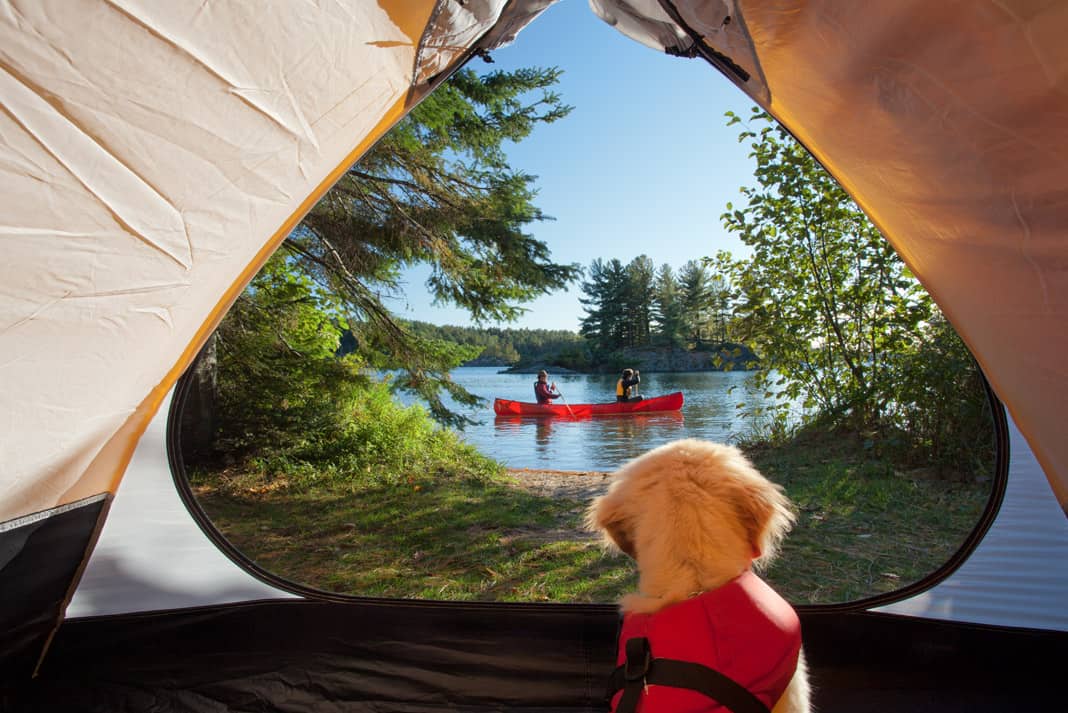A tent is one of the most expensive pieces of outdoor gear a camper will ever buy. Knowing how to repair a tent isn’t just an essential skill, it can also save hundreds of dollars. Tackle the six most common maintenance problems with this expert advice and keep your backcountry castle a fortress.
How to Maintain and Repair Your Tent
1 Hand Wash Mold and Mildew
Bacteria prefer damp and moist environments, and a less-than-bone-dry tent stored in a stuff sack is prime territory for offensive organisms to fester. Tents are not designed for the abuse of a washing machine’s agitator, so hand washing is the only sensible option.
Mild molding can often be removed with gentle spot cleaning using a paste of salt and lemon juice added to an equal amount of water. Need something tougher? A cleaner specifically designed for outdoor gear and clothing, like products from Nikwax, can be used. Set up the tent, and then gently spot clean with the solution of your choosing using a non-abrasive sponge. When finished, rinse the tent, and allow it to dry completely before putting it away. Though washing will kill mold and mildew, the discoloration of the fabric will often remain.
For a truly filthy tent in need of a deep clean, unzip all of its zippers and soak it in a bucket of warm water containing five drops of non-detergent liquid soap. Soak for three hours, rinse it, set it up, spot clean and allow it to dry completely.

2 Remove Peeling
If your tent is peeling or flaking on the top side of its floor or on the underside of its fly, it needs a new polyurethane coating. First, soak the tent in a bucket of warm water then scrub off the remaining polyurethane coating with a non-abrasive sponge and a mixture of isopropyl alcohol, water and two drops of liquid soap. This will remove the old coating. Then, set up the tent and let it dry completely. Paint a thin layer of tent fabric sealant onto the top side of the tent floor or the bottom side of the tent fly as needed, and along all seams.
Be sure to get the correct product for your tent’s fabric, as sealant is specifically designed for the fabric it will be applied to. Allow the sealant to dry completely before packing, preferably for at least 24 hours. Once dry, any remaining tackiness can be removed by sprinkling a little talcum powder on top.
3 Patch Tears
Even well cared for tents can tear. Fortunately, this is an easy fix, even in the backcountry. Bring a tent repair kit on every trip packed with rubbing alcohol, scissors, a cloth and repair tape.
To fix a tear, clean the area around it with rubbing alcohol and a cloth. Then, cut an oval-shaped piece of repair tape large enough to encompass a one-inch area surrounding the tear. Place the tent on a solid surface, such as a flat boulder, large log or overturned canoe and line up the edges of the rip. Remove the backing from the repair tape and press it firmly into place. Patch both sides of the tent and allow it to cure after the repair for as long as possible—24 hours is ideal.
4 Repair a Zipper
If your zipper isn’t running smoothly along its tracks, run a graphite pencil along the zipper’s teeth to deposit the pencil’s graphite. The graphite acts as a lubricant, smoothing out rough spots.
If the zipper’s puller is missing, slide a thin piece of parachute cord through the eye of the bridge and tie it off to create an easy pull. In cases where a piece of fabric is stuck in a zipper or in the slider, apply liquid soap to the fabric and pull gently on the fabric to release it.
5 Seal Seams
If you see peeling seal tape, you’ll need to reseal those seams. Set up the tent and gently remove the peeling tape. Only seal on the underside of the fly and interior of the tent body.
First clean the area to be sealed with rubbing alcohol and a cloth, then apply a thin layer of liquid seam sealer. Allow it to dry completely before packing the tent away. Very small holes in the tent body, often caused by sparks or thorns, can often be fixed with liquid seam sealer.
6 Re-Waterproof
A tent’s waterproof qualities can be refreshed with durable water repellent (DWR). Set up the tent and spray DWR on the outside of the rainfly. After about five minutes, gently wipe the tent with a damp cloth to disperse the DWR evenly. Allow the tent to dry completely.
When to Say Goodbye to Your Tent
Broken zippers and missing teeth, as well as large tears, usually require professional help or replacement. When the rainfly becomes sticky, it’s best to get a new one. If the floor or the rainfly are failing, and a new rainfly isn’t available, repair may be more time and money than the tent is worth.
This article was first published in Issue 63 of Paddling Magazine. Subscribe to Paddling Magazine’s print and digital editions, or browse the archives.
Thou shalt always leave a guard dog on duty. | Feature Photo: Ethan Meleg









The most common tent maintenance mistake is in storing them between seasons. Most people, including me until my second tent required replacement due to leaking, store their tents rolled up in their carry bag. Once your tent is completely dry store it loose and fluffed up in a generously sized plastic tote bin. Doing this will eliminate the crease leaks that almost every improperly stored tent will eventually develop over time. Store your sleeping bags the same way as well. Similarly, your Thermarest or other inflatable mattress should be loosely inflated and stored on its side against a wall. Pilots have a saying, “Learn from the mistakes of others: you won’t live long enough to make them all yourself.” At 75 years I’ve made and learned from a lot of mistakes and still manage to spend an average of about 20 days, and nights, on fishing/camping trips each year.